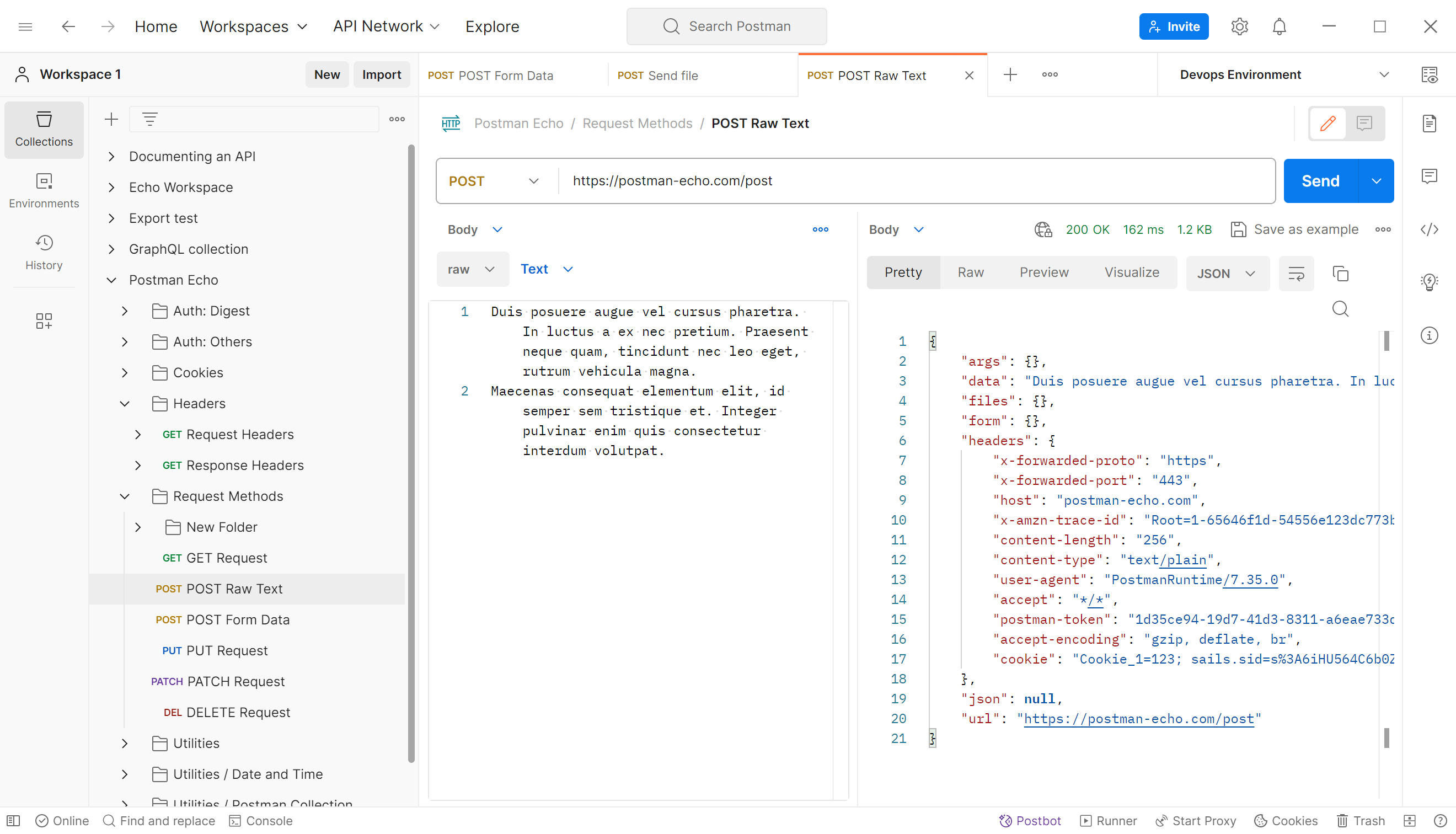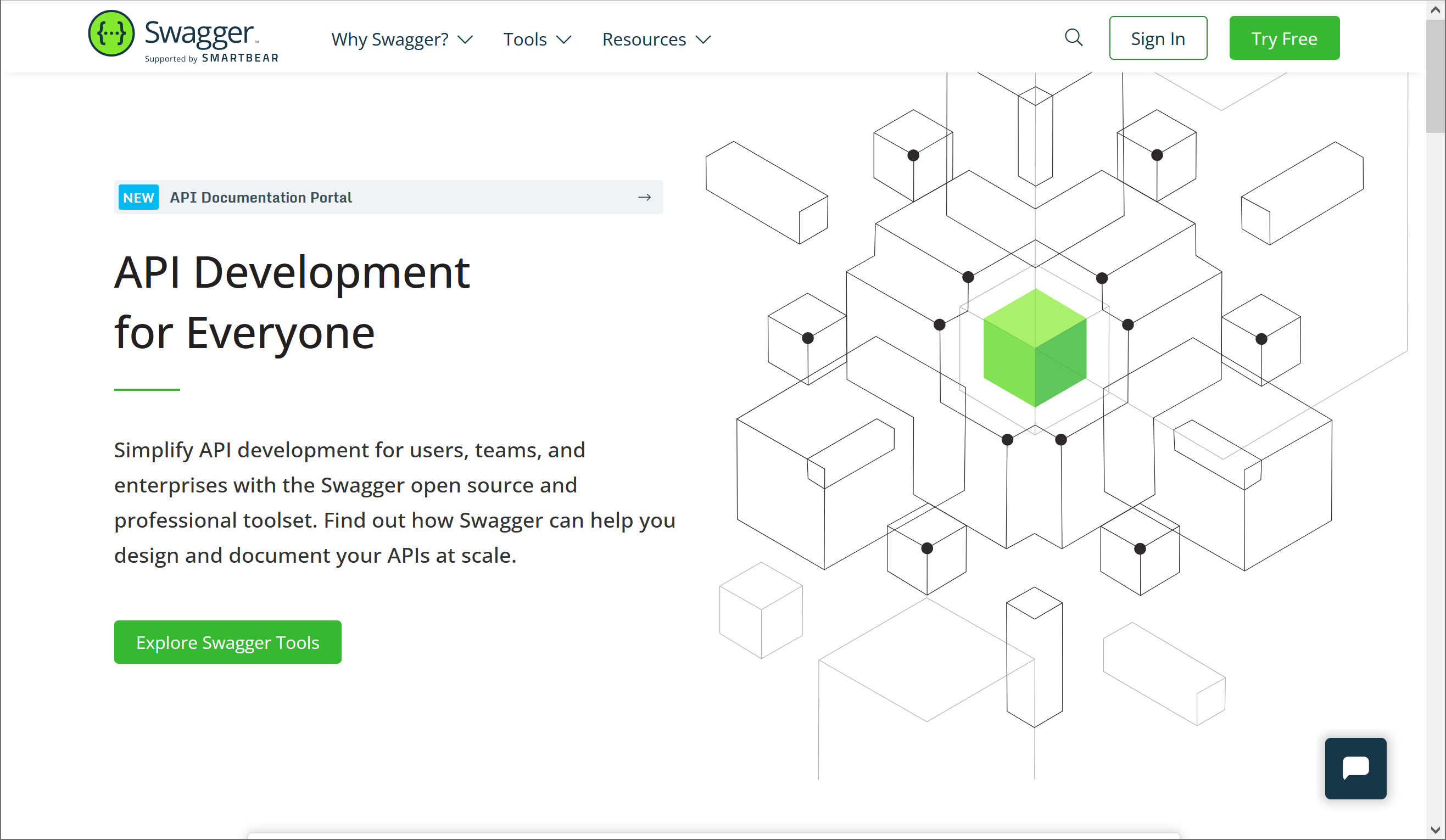
Postman vs Swagger – Best tool for API in 2025
In this article, we will make a detailed comparison of the functionality of Postman and Swagger and find out which tool is better for testing REST API in 2025. Choosing the right API testing tool is crucial for efficient development and seamless integration of APIs. Let's quickly take a look at the pros and cons of the two most popular testing tools.
Postman
Postman is the most popular and well-known API testing tool. It was originally created in 2014 as an extension for the Chrome browser. Postman later became available as a desktop application for Windows, Mac and Linux.
Postman has a wide range of features, including the ability to create and manage API requests, write and run automated tests, and collaborate with team members. It also offers a user-friendly interface and a wide range of integrations with other tools and services.

Despite all the advantages and versatility, recently many users are looking for a replacement. We recently covered in a large review the 10 best Postman alternatives in 2025.
Key features
Let's look at the main features of the Postman API testing tool.
- Automated testing: Postman supports automated testing, allowing users to run tests automatically and receive test results in real-time.
- User-friendly interface: Postman has a user-friendly interface that makes it easy to create, organize, and run API tests.
- Mock servers: Postman allows users to create mock servers for testing APIs, making it possible to test APIs without having to set up a real server.
- Integration with other tools: Postman integrates with other tools like Jira, GitHub, and Slack, making it easy to incorporate API testing into the software development workflow.
- Collaboration: Postman allows users to collaborate on API testing projects with team members, making it easy to share test cases and results.
- Collection and environment management: Postman allows users to organize their API tests into collections and manage different environments for testing.
User comments from AlternativeTo
I'm using Postman when developing using REST APIs and have so far not run into any issues. It has pretty cool features, it's really powerful than most people think
I used to like Postman for getting some quick API testing done, but it's been crippled so much recently that it basically forces you to log in to do even the most basic stuff.
Was great but Postman now hold your data hostage. Opened the app one day and there had been an update that now locks all your local projects, collection, secrets, etc behind a cloud account. You cannot get to your configuration anymore unless you create a cloud account. Huge dick move by the company and I will not support that kind of behaviour. Looking for alternatives now.
Overall, Postman is a user-friendly API testing tool with a wide range of features and capabilities for API testing. Its user-friendly interface, variable and environment management, automated testing, collaboration, mock servers, and integration with other tools make it a popular choice for developers and testers.
Swagger
Swagger is basically a description language that is used for the description of REST API. It is open-source software. It was initially released in 2011. The development credit for this software goes to SmartBear software. Tony Tam is the inventor of Swagger.
Swagger is open-source software that lets users design, build, document, and test APIs. It is known for its intuitive design framework and constant efforts to bring automation into REST API documentation.
Open-source projects and communities appreciate Swagger for its open nature and ease of integration with more open-source tools. It provides a transparent and standardized way to document and interact with APIs, which aligns well with the principles of open-source development.

Key features
Let's take a look at the features of Swagger, which is the main alternative for Postman.
- Swagger GUI: A user-friendly interface for the design and documentation of REST APIs.
- Supports automated documentation and integration with other tools.
- Primarily designed for API design and documentation, with some integrations for monitoring.
- Swagger Codegen: Swagger Codegen generates client libraries, server stubs, and API documentation based on your Swagger/OpenAPI specification
- Continuous Integration (CI) Tools: CI tools such as Jenkins, Travis CI, and CircleCI can be configured to automatically validate Swagger/OpenAPI specifications and generate documentation as part of your CI/CD pipeline.
- API Gateways: API gateways like AWS API Gateway and Azure API Management can import and integrate with Swagger/OpenAPI specifications.
User comments from AlternativeTo
I'm mobile dev. I was working in team, where backend devs have integrated Swagger. It eliminates all of the problems with documentation and improve speed of development for the whole team.
Swagger is not at all user friendly, you need to have a certain degree of experience to fully understand a reference. If you have an API and you plan to use it for your clients, consider another much more user-friendly and better UX option.
Almost good and literally helpful for the clients/customers to check the endpoints but Swagger could have the feature of environment setup where we can set up different env like QA, and production.
The choice should be based on factors such as your team's familiarity with the tool, the requirements of your project, and the level of automation and collaboration features you need. It's important to evaluate different tools to determine which one best suits your API testing goals.
Overall, Postman is considered easier to install and use, whereas Swagger is more reliable in terms of scalability. Postman is better for API testing and has good data security features, while Swagger is better for API documentation and design management. When it comes to access control and visibility, Swagger is the better option.
NativeRest
NativeRest is high-performance and memory efficient REST Client for Windows. Desktop application is not using Electron, thanks to this, NativeRest is incredibly fast and consumes very little memory. It's combines an easy-to-use interface with advanced functionality like environment variables, authentication helpers and code generation.
NativeRest is a great alternative to Postman and Swagger, especially if you don't need the rich feature set that Postman provides. The simplicity and freshness of the NativeRest interface will allow you to take a fresh look at creating and testing REST APIs.

Key features
Let's take a look at the features of NativeRest is a new tool for creating and testing APIs.
- High-performance and memory efficient. NativeRest is 100% native application, that is compiled for different platforms. It starts fast, uses less memory and CPU.
- Working in offline mode. NativeRest can be used without internet connection. You decide to use only local workspaces or additionally create cloud workspaces.
- Simple testing. NativeRest provides a way to easily test your API. Use single line tests to check status, time, body, headers, cookies of response.
- Generating code snippets. You can generate code snippets in various languages and frameworks within NativeRest. Over fifteen different languages.
- Full-featured portable version. NativeRest is available in a portable version as well. The portable version is distributed as a single executable file and does not require administrator privileges.
- Import and export data. You can import data from other REST clients such as Postman, Swagger. You can migrate without loss earlier created collections, environments and variables.
- NativeRest is a multilingual HTTP client that supports multiple languages. Currently, it supports 10 languages, including English, Spanish, Portuguese, French, German, Russian, Bulgarian, Simplified Chinese, Traditional Chinese, Japanese. NativeRest uses system language by default. You can change the language in settings without restarting app.
User comments from AlternativeTo
Great alternative to Postman for Windows. Requires low RAM and runs fast, GUI is very responsive. Special thanks for the powerful environment variables. Thanks dev!
I've been using Postman for 5 years, but today it has become incredibly slow. The performance of NativeRest is amazing. Wow. Other clients based on Electron are very slow and eat up all RAM. NativeRest allowed me to import all collections from Postman.
This application does not support the gRPC protocol, which I am using in my new project. I hope that the set of functions and capabilities will expand over time. There is also no version for Mac yet.
NativeRest is a new tool for creating, debugging and testing APIs. Some of its features are unique and not available in Swagger and Postman. Try the fastest REST API client and tell your friends.
See description of all features on NativeRest page.